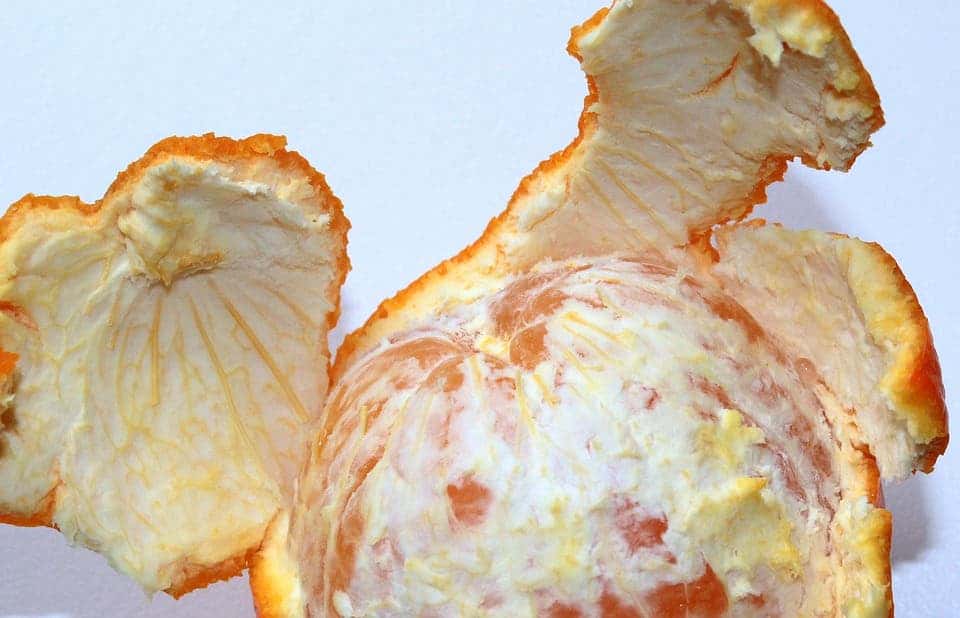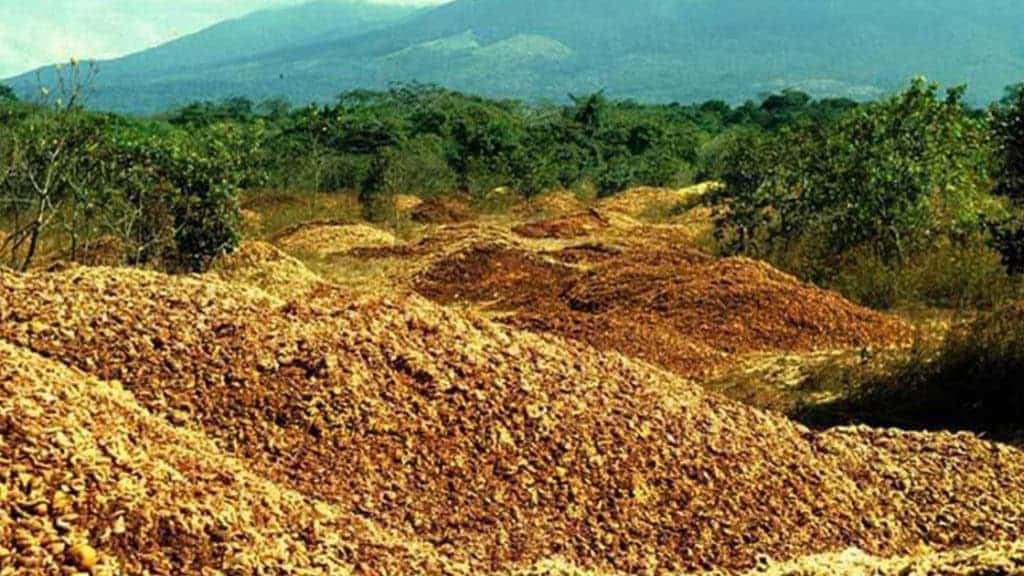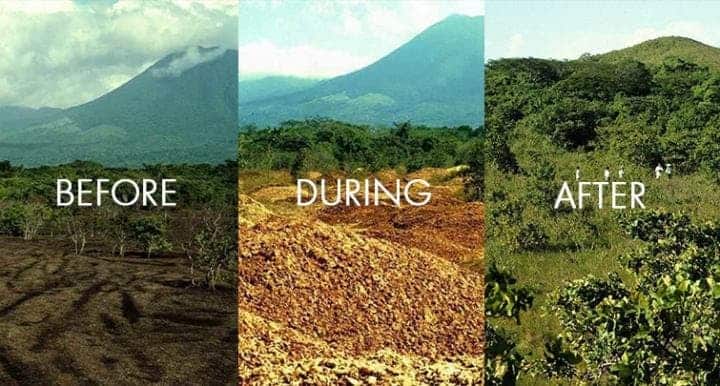Back in the 1990s, a husband and wife duo of University of Pennsylvania ecologists teamed up with a juice company to dump orange peels and pulp on a barren pasture in a Costa Rican national park. Today, the area is covered in lush vegetation that puts neighboring forests to shame, a new paper reports.

This project is the brain child of Daniel Janzen and Winnie Hallwachs, a husband-and-wife team of ecologists at the University of Pennsylvania who worked as researchers and technical advisers for Costa Rica’s Área de Conservación Guanacaste (ACG, Guanacaste Conservation Area) back in the 90s. The job let them witness the strain tropical forest ecosystems are put under first-hand — so they decided to focus the latter half of their careers on preserving them.
A-pealing
So in 1997, they approached orange juice manufacturer Del Oro, a company that was just starting production along the ACG’s northern border with a proposal. If Del Oro would donate a part of the forested area they owned to the ACG, it would be allowed to dump its orange waste at no extra cost on degraded land within the park. The deal went through and in the first year alone some 12,000 metric tons of orange pulp and peels found their way to degraded land. Because of legal complications (a rival company sued Del Oro for “defiling a national park”), the peeled land remained largely overlooked up to now.
But the deal did pay off, says Timothy Treuer, a graduate student in Princeton’s Department of Ecology and Evolutionary Biology and co-lead author of the paper quantifying the outcome today.

Image credits Daniel Janzen and Winnie Hallwachs.
“This is one of the only instances I’ve ever heard of where you can have cost-negative carbon sequestration,” Treuer adds. “It’s not just a win-win between the company and the local park — it’s a win for everyone.”
Truer teamed up with Jonathan Choi, who was a Princeton ecology and evolutionary biology senior at the time. The two evaluated two sets of soil samples to see what (if any) effect the peels had on soil quality. The first set of samples was collected and analyzed in 2000 by co-author Laura Shanks from Belio College. Her results were never published, so her analysis was incorporated in the study to serve as a benchmark. The second set of samples was collected in 2014 by Choi.
But even without looking at the results, the duo could tell that the oranges left a big mark on the area.
“It was so completely overgrown with trees and vines that I couldn’t even see the 7-foot-long sign with bright yellow lettering marking the site that was only a few feet from the road,” Truer recounts.
“The site was more impressive in person than I could’ve imagined,” Choi added. “While I would walk over exposed rock and dead grass in the nearby fields, I’d have to climb through undergrowth and cut paths through walls of vines in the orange peel site itself.”
More of everything

To quantify changes in vegetation, the team used several transects within the area. These were 100-meter-long parallel lines through the forest, which the team would use as guides. For control, they set up a similar transect system on the pasture on the other side of the road, which hadn’t been used to dump the peels. Lastly, they identified the species and measured the diameter of every tree within 3 meters of each transect for both areas.
The differences were quite dramatic. In the peel-plastered area, the team found richer soil, more diversity in the species of trees, more overall biomass (the trees grew bigger and faster), and greater canopy closure compared to the control area.
They found dramatic differences between the areas covered in orange peels and those that were not. The area fertilized by orange waste had richer soil, more tree biomass, greater tree-species richness and greater forest canopy closure. All in all, these effects show that agricultural waste can play a huge hand in regenerating forest ecosystems while also sequestering a large quantity of carbon at virtually no cost to industry or society at large.
“Plenty of environmental problems are produced by companies, which, to be fair, are simply producing the things people need or want,” said study co-author David Wilcove, Professor of ecology and evolutionary biology and public affairs and the Princeton Environmental Institute.
“But an awful lot of those problems can be alleviated if the private sector and the environmental community work together. I’m confident we’ll find many more opportunities to use the ‘leftovers’ from industrial food production to bring back tropical forests. That’s recycling at its best.”
It’s not very surprising to see that the peels helped the forest get back on its feet — after all, people have been using compost to fuel crops for centuries. Considering the ease and virtually inexistent cost of the operation, however, similar projects should be implemented around the world to boost struggling forest ecosystems while keeping our landfills emptier.
The paper “Low-cost agricultural waste accelerates tropical forest regeneration” has been published in the journal Restoration Ecology.


